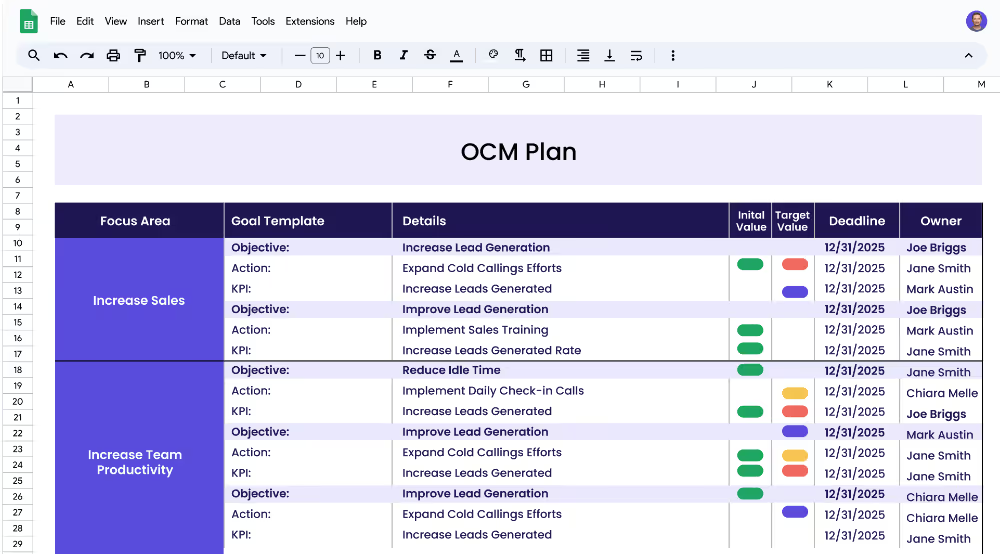Organizational Change Management (OCM) plans are detailed strategies that enable teams to implement changes throughout their organization effectively. OCM plans identify focus areas, set objectives and measurable targets, and implement related projects to achieve those targets. A well-crafted OCM plan can help organizations quickly and efficiently reach their desired objectives.
Each focus area has its own objectives, projects, and KPIs to ensure that the strategy is comprehensive and effective.
This OCM Plan template is designed to help teams and managers in any industry implement changes within their organization. The template provides a framework for organizations to easily record and track the progress of their OCM plans. The template is easy to use, and will help teams to effectively plan and manage their organizational change initiatives.
Focus areas are the main areas that need to be addressed in order for the organizational change to be successful. Examples of focus areas could include increasing organizational efficiency, improving decision-making, and maximizing technology investments. It is important to identify and clearly define the focus areas so that they can be addressed in the OCM plan.
Objectives are the specific goals that need to be achieved in order to accomplish the desired change. Objectives should be SMART (Specific, Measurable, Achievable, Relevant, and Timely). Examples of some objectives for the focus area of Increase Organizational Efficiency could be: Streamline Operational Processes, and Enhance Employee Engagement.
Once an objective has been identified, it is important to set measurable targets, or Key Performance Indicators (KPIs). KPIs are used to track progress towards the objective. For example, a KPI under the objective of streamlining operational processes could be decreasing the number of steps in the process. Setting measurable targets allows teams to track progress and ensure that the objectives are being met.
Once measurable targets have been identified, it is important to implement related projects in order to achieve those targets. Projects could include assigning roles and responsibilities, implementing communication channels, automating data capturing, and establishing guidelines. These projects should be aligned with the focus area and objectives in order to ensure the desired change is achieved.
If you're ready to accelerate your overall strategy and see faster results, consider utilizing Cascade Strategy Execution Software. Unlike spreadsheets, which can become cumbersome and error-prone as strategies expand, Cascade offers a dynamic platform that enhances strategy visibility, fosters real-time updates, and facilitates centralized collaboration. Sign-up for free or book a demo with one of our strategy experts to begin optimizing your strategic operations today.


